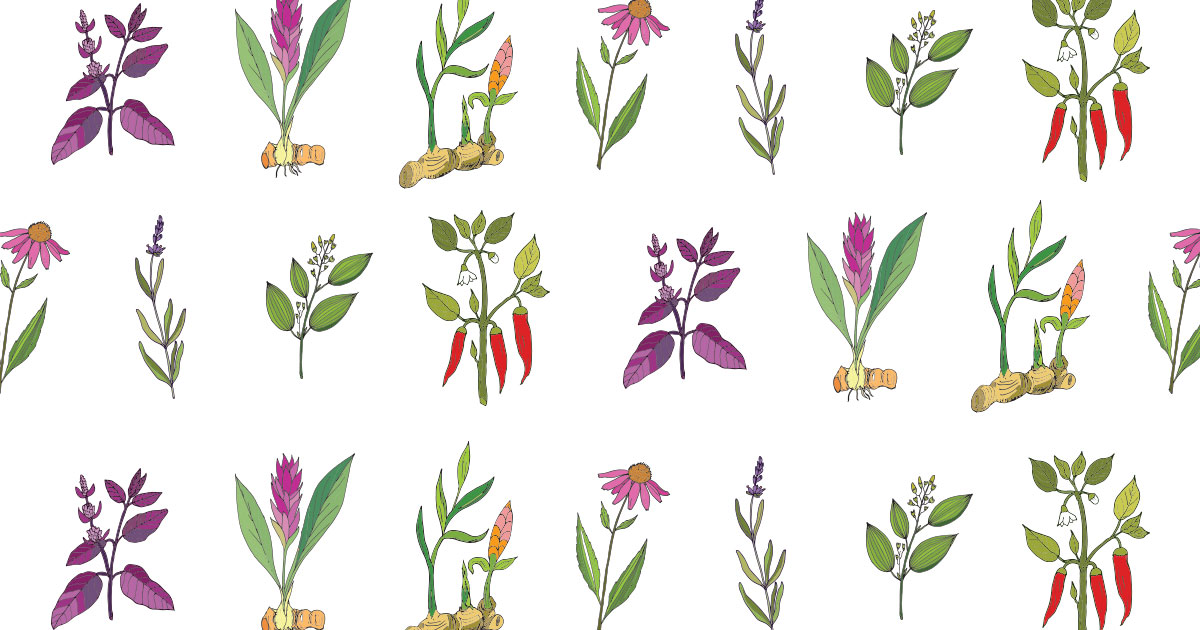At a time when agriculture was not a word, Paleolithic humans hunted wild game, and gathered leafy greens and a variety of nuts and fruits. Archaeological evidence in the form of clay tablets suggested the Sumerians used medicinal plants to treat illnesses. The knowledge known today was passed down through the generations. You may use rosemary to ease coughing, peppermint as a solution for stomach pain, or cilantro to boost energy levels. The glass bottles in your cupboard have a broader purpose than to add flavor. The following seven herbs have medicinal powers to help you achieve particular health goals.
- Basil: Renowned for its distinctive flavor, scent, and healing properties, it has a long history. Once used as an ingredient for salves prepared for royalty, or used in households for flavoring or medicinal purposes. Most often, sweet basil is the herb of choice to treat irritability, anxiety, and fatigue.
Insect Bite: Mash a few basil leaves and apply to an insect bite for 15 minutes. The antibacterial properties can aid in relieving bites, stings, and swelling.
- Cayenne: Identified by its bright red chilies, only the fruit is edible as the leaves, stems, and flowers are toxic. Cayenne assists in digestion and stimulates circulation throughout the body. Rich in vitamins A and C, cayenne is the herb need to boost the immune system during cold and flu season.
Experiencing Poor Circulation? Sprinkle a small amount of cayenne in your shoes. The result may create a warming sensation.
- Cinnamon: Beloved by ancient Egyptians, Greeks, and Romans for preventing sickness, it contains anti-infectious compounds that can naturally lower blood sugar and LDL cholesterol.
Easing Menstrual Difficulties: In one cup of boiling water, add one teaspoon of chopped cinnamon bark and one teaspoon of freshly grated gingerroot. Allow to steep for 30 minutes. Strain. Add honey to sweeten. Take small sips until cramps subside.
- Echinacea: While it is a powerful immune-boosting herb, echinacea contains antimicrobial properties to lessen fever, flu, and colds. Teas will soothe a sore throat and ease a cough.
Growing Echinacea: Look in your garden for a tall purple coneflower. Whether it was planted or growing wild, echinacea may be fresh and readily available a mere few steps away. Easy to grow as a plant or with seeds, make sure it is planted with a hand full of rocks to promote drainage. Coneflowers thrive with little water.
- Ginger: Feeling nauseous? Consider a meal which contains ginger. It can calm the digestive tract and reduce motion sickness with better results than an over-the-counter drug.
Meal Combinations: If wondering how to pair ginger with food, consider recipes including potatoes or Jasmine rice, and surprisingly, pears.
- Lavender: Tall spikes of purple flowers grow in bunches. Its aroma not only attracts bees and butterflies but people, too. While this herb is widely known for its calming abilities, a few twigs placed in a bedroom relieves tension, stress, and insomnia. As an oil, its antibacterial, antifungal, and antiseptic properties can treat infections and nail fungus, and heal scrapes and wounds.
Herbal Bath: Immerse yourself in a giant cup of tea. Begin with a cotton bag; then, add lavender, chamomile, and rose or any combination you desire. Allow hot water to run through the bag for a few minutes transforming the tub water into an herbal infusion. Add cold water to the desired temperature. Great for adults and especially children.
- Turmeric: The plant, commonly seen as a red powder, often adds flavor to Asian and Middle Eastern cuisine. As a close cousin to ginger, its anti-inflammatory properties also decrease swelling, digestion difficulties, and pain caused by osteoarthritis. Studies prove turmeric can improve digestion, circulation, and promote brain health.
Heals the Skin: One ancient remedy was to create a paste using turmeric with water or milk and apply. While the enzymes aid in cleansing and increase healing, the overall benefit is to promote proper growth of the skin.
Continue learning about medicinal herbs by researching your favorites. It’s no wonder you enjoy the flavor and aroma of chamomile, peppermint, or rosemary; each one is a vital ingredient towards the promotion of well-being. With the herb thriving in your kitchen window, podcasts or books written by Rosemary Gladstar can offer tips and recipes to further your education in growing and harvesting beneficial plants as well as its conventional use.



















